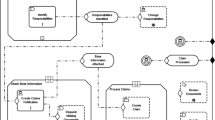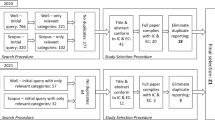Abstract
This study analyzes OMG (Object Management Group) notations, their capabilities, and potential drawbacks. It includes a literature review and a survey focused on the purpose of using OMG models in the IT sector. Conducted via CAWI (Computer Assisted Web Interview) with 160 respondents from Polish IT companies, the survey aimed to identify which OMG notations are used, their practical applications, creation sequences, and the impact of job roles. The results confirmed the objective of validating the purposeful use of various notations. The survey established relationships and justified the use of specific models by Polish IT professionals with different job profiles. It highlighted the diverse perspectives needed in software development, depending on the role within the project. The survey also identified the most commonly used platforms for designing models with OMG notations and revealed that there is no universal modeling tool suitable for all stages of the process.
Access this chapter
Tax calculation will be finalised at checkout
Purchases are for personal use only
Similar content being viewed by others
References
OMG. Unified Modeling Language ver. 2.5.1. https://www.omg.org/spec/UML/2.5.1/PDF, OMG Document Number: 2017-12-05 (2017)
Dobing, B., Parsons, J.: How UML is used. Commun. ACM 49(5), 109–113 (2006)
Grossman, M., Aronson, J.E., McCarthy, R.V.: Does UML make the grade? insights from the software development community. Inf. Softw. Technol. 47(6), 383–397 (2005)
Langer, P., Mayerhofer, T., Wimmer, M., Kappel, G. On the usage of UML: initial results of analyzing open UML models. In: Fill, H., Ulrich Reimer, D.K. (eds.) Modellierung 2014, pp. 19–21 (2014)
Reggio, G., Leotta, M., Ricca, F.: Who knows/uses what of the UML: a personal opinion survey. In: Dingel, J., Schulte, W., Ramos, I., Abrahão, S., Insfran, E. (eds.) MODELS 2014. LNCS, vol. 8767, pp. 149–165. Springer, Cham (2014). https://doi.org/10.1007/978-3-319-11653-2_10
Scanniello, G., Gravino, C., Tortora, G.: Investigating the role of UML in the software modeling and maintenance - a preliminary industrial survey. In: Filipe, J., Cordeiro, J. (eds.) ICEIS 2010, pp. 141–148. SciTePress (2010)
Ambler, S.W.: UML 2.5: Do you even care? (2013). https://www.drdobbs.com/architecture-and-design/uml-25-do-you-even-care/240163702#disqus_thread
Cabot, J.: What do their creators think about UML now? Modeling Languages (2018). https://modeling-languages.com/uml-opinions-creators/
Cabot, J.: Grady Booch’s comments on UML/MDA and software engineering. Modeling Languages (2009). https://modeling-languages.com/grady-boochs-comments-umlmda/
Störrle, H.: How are conceptual models used in industrial software development? A descriptive survey. In: Proceedings of the 21st International Conference on Evaluation and Assessment in Software Engineering, EASE 2017 (2017)
Petre, M. UML in practice. In Proceedings of the 2013 International Conference on Software Engineering, ICSE 2013, pp. 722–731. IEEE Press (2013)
Petre, M.: “No shit” or “Oh, shit!”: responses to observations on the use of UML in professional practice. Softw. Syst. Model. 13, 1225–1235 (2014)
Selic, B.: The pragmatics of model-driven development. IEEE Softw. 20(5), 19–25 (2003)
Dobing, B., Parsons, J.: Dimensions of UML diagram use: a survey of practitioners. J. Database Manag. (JDM) 19(1), 1–18 (2008)
Reggio, G., Leotta, M., Ricca, F., Clerissi, D.: What are the used activity diagram constructs? - a survey. In: Pires, L.F., Hammoudi, S., Filipe, J., das Neves, R.C. (eds.) MODELSWARD 2014, pp. 87–98. SciTePress (2014)
Budgen, D., Burn, A.J., Brereton, O.P., Kitchenham, B.A., Pretorius, R.: Empirical evidence about the UML: a systematic literature review. Softw.—Pract. Exp. 41, 363–392 (2011)
Baltes, S., Diehl, S.: Sketches and diagrams in practice. In: Proceedings of the 22nd ACM SIGSOFT International Symposium on Foundations of Software Engineering, pp. 530–541 (2014)
Davies, I., Green, P., Rosemann, M., Indulska, M., Gallo, S.: How do practitioners use conceptual modeling in practice? Data Knowl. Eng. 58(3), 358–380 (2006)
Forward, A., Lethbridge, T.C.: Problems and opportunities for model-centric versus code-centric software development: a survey of software professionals. In: MiSE 2008, pp. 27–32. Association for Computing Machinery, New York (2008)
Lange, C., Chaudron, M., Muskens, J.: UML software architecture and design description. IEEE Softw. 23(2), 40–46 (2006)
Nugroho, A., Chaudron, M.R.V.: A survey into the rigor of UML use and its perceived impact on quality and productivity. In: Rombach, H.D., Elbaum, S.G., Münch, J. (eds.) ESEM 2008, pp. 90–99. ACM (2008)
Fernández-Sáez, A.M., Chaudron, M., Genero, M.: An industrial case study on the use of UML in software maintenance and its perceived benefits and hurdles. Empir. Softw. Eng. 23, 3281–3345 (2018)
Fernández-Sáez, A.M., Genero, M., Chaudron, M.R.: Empirical studies concerning the maintenance of UML diagrams and their use in the maintenance of code: a systematic mapping study. Inf. Softw. Technol. 55(7), 1119–1142 (2013)
Farias, K., Gonçales, L., Bischoff, V., Silva, B., Guimarães, E.T., Nogle, J.: On the UML use in the Brazilian industry: a state of the practice survey. In: SEKE (2018)
Ozkaya, M., Erata, F.: A survey on the practical use of UML for different software architecture viewpoints. Inf. Softw. Technol. 121 (2020)
Zyła, K., Ulidowski, A., Wrzos, J., Włodarczyk, B., Krocz, K., Drozd, P.: UML – a survey on technical university students in Lublin. J. Comput. Sci. Inst. 13, 279–282 (2019)
OMG. UML vendor directory listing (2021). https://www.omg.org/uml-directory/vendor/list.htm
Modeling Languages. Top online UML modeling tools in 2019 (2019). https://modeling-languages.com/web-based-modeling-tools-uml-er-bpmn/
Cabot, J. Modeling, low-code tools (2019). https://twitter.com/i/lists/744723693801209856
Cabot, J., 25 best UML tools free UML diagram software in 2021 (2021). https://www.guru99.com/best-uml-tools.html
Modeling Languages.com. Curated list of UML tools – 2022 edition (2022). https://modeling-languages.com/uml-tools/
Thong, W.J., Ameedeen, M.A.: A survey of UML tools. In: Abawajy, J., Othman, M., Ghazali, R., Deris, M., Mahdin, H., Herawan, T. (eds.) DaEng-2015. Lecture Notes in Electrical Engineering, vol. 520, pp. 61–70. Springer, Singapore (2019). https://doi.org/10.1007/978-981-13-1799-6_7
Author information
Authors and Affiliations
Corresponding author
Editor information
Editors and Affiliations
Rights and permissions
Copyright information
© 2024 The Author(s), under exclusive license to Springer Nature Switzerland AG
About this paper
Cite this paper
Suchenia, A., Suchenia, K., Ślażyński, M., Szała, L. (2024). Role and Application of OMG Notations in IT: Analysis and Survey on the Effectiveness of Business Notations Among IT Companies in Poland. In: Di Ciccio, C., et al. Business Process Management: Blockchain, Robotic Process Automation, Central and Eastern European, Educators and Industry Forum. BPM 2024. Lecture Notes in Business Information Processing, vol 527. Springer, Cham. https://doi.org/10.1007/978-3-031-70445-1_17
Download citation
DOI: https://doi.org/10.1007/978-3-031-70445-1_17
Published:
Publisher Name: Springer, Cham
Print ISBN: 978-3-031-70444-4
Online ISBN: 978-3-031-70445-1
eBook Packages: Computer ScienceComputer Science (R0)




